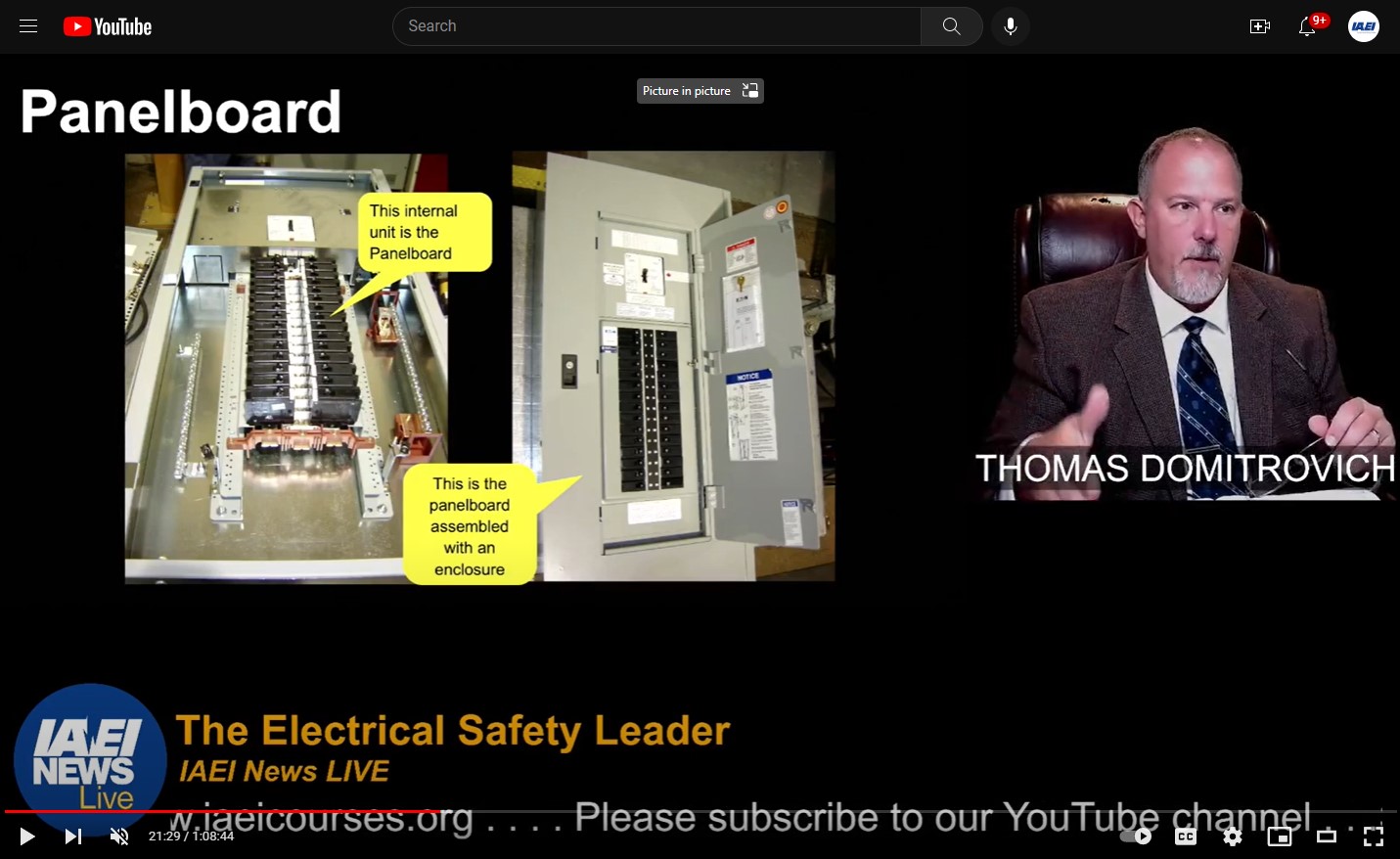Can a panelboard be located “you fill in the blank?” How often have you heard this question? Let’s take a look at some of the rules on panelboard placement contained in the National Electric Code (NEC). Other than the required working spaces of NEC Section 110.26(A) and the dedicated space rules of NEC Section 110.26(E) that must be provided at these panelboard locations, there are very few specific rules concerning panelboard placement. One such rule is a new 2020 NEC Section 408.43, which prohibits a panelboard(s) from being installed in the face-up position. A panelboard installed in this manner would be prone to collecting debris and other contaminants on the panelboard. This type of installation would also expose a worker to the hazard of a dropped tool contacting the panelboard, such as when voltage or ampacity testing equipment is being used. It is important to note NEC Section 408.43 does not prohibit a panelboard from being installed in the face-down position.
Most of the rules that have a limiting effect on where we can place our panelboard are governed by restrictions on the location of the overcurrent devices that are installed on these panelboards. Some examples of frequently asked questions are: can a panelboard be located over the steps of a stairway, in the vicinity of easily ignitable material such as in a clothes closet, or a dwelling unit bathroom? The answer to all of these questions is yes. However, overcurrent devices may not be installed in these locations, creating a practical prohibition on locating panelboards in these spaces, as once installed, no overcurrent device may be installed on the panelboard.
Another interesting question that arises is, “At what height above finished grade, floor or working platform may a panelboard be installed?” The answer is the height of the panelboard is generally not restricted by the NEC. Again, it is the switch or overcurrent device ahead of or on the panelboard that controls this issue. NEC Section 240.24(A), with a few exceptions, requires that circuit breakers and switches containing fuses be readily accessible and located so that the center of the grip of the operating handle in its highest position is no more than 2.0 m (6 ft 7 in.) above the floor or working platform.
If a panelboard is installed in a manner that results in pole spaces located above 2.0 m (6 ft 7 in.) but overcurrent devices are only installed up to the 2.0 (6 ft 7 in.) pole space, is this permitted by the NEC? The answer is yes. Keep in mind this height limitation is for the switch, fused switch, or circuit breaker, not the panelboard, so no violation has occurred until a circuit breaker as described in Section 240.24(A) or Section 404.8(A) is installed above this maximum permitted height. As industry professionals, our concern for safety and code compliance can cause us to get caught up in the “what if” of an installation. An example may be, “what if we have these open poll spaces; someone could come along and add switches or overcurrent devices that are now higher than 2.0 m (6 ft 7 in.). With the possible exception of protecting from physical damage where directed, anticipating what might happen is generally going beyond the scope of the NEC. A code-making panel (CMP) may take the “what if” into consideration when crafting code language such as with exposure to physical damage. However, in order to avoid redundancy, code-making panels are generally less inclined to create restrictions on installations that are already prohibited by other code sections.
Now that we have discussed the permitted height of a panelboard, “how low can you go.” Only a few locations in the NEC specify a minimum mounting height above finished grade, floor, or working platform. One such section is 550.32(F). This section requires the enclosure containing a mobile or manufactured home disconnecting means to be located a minimum of 600 mm (2 ft) above finished grade or working platform. If the disconnecting means is a breaker installed on a panelboard, this section will limit the panelboard accordingly.
Other minimum height requirements are found in 2020 NEC Article 682 Natural and Artificially Made Bodies of Water and Article 555 Marinas, Boatyards, Floating Buildings, and Commercial and Noncommercial Docking Facilities. These articles contain sections that require electrical equipment to be located above the datum plane. The datum plane is an area 606 mm (2 ft) above the maximum tidal fluctuation or on inland bodies 606 mm (2 ft) above the maximum water level under normal conditions. Additionally, 2020 NEC Section 682.11 requires live parts at service equipment, which may be a panelboard be located at least 300 mm (12 in.) above the datum plane.
Other sections of the NEC may incidentally affect where we place or are not allowed to place panelboards such as when a panelboard enclosure also contains a service disconnecting means, supply to mobile or manufacturer homes, and critical operation power supplies are a few examples.
Panelboard placement is a very basic and essential component of any electrical installation. If panelboards are installed in locations where not permitted or their use is restricted by prohibitions on overcurrent device placement, this may result in a “start over” approach to the installation, which is a situation best avoided.















Find Us on Socials